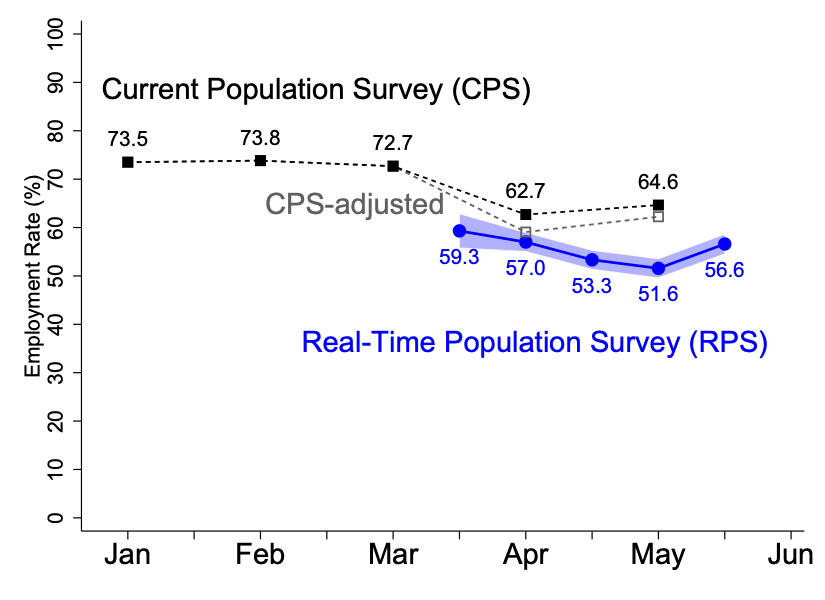
June 8, 2020
Employment beginning to rebound, new survey shows
Share this story
The labor market experienced a substantial uptick in activity during the last week of May, with the employment rate increasing by 5%, according to a report by economists from Virginia Commonwealth University and Arizona State University.
“After two months of the worst economic data since at least World War II, our most recent survey reveals a sharp uptick in labor market activity,” said Adam Blandin, Ph.D., an assistant professor in the VCU School of Business who conducts the biweekly Real-Time Population Survey with Alexander Bick, Ph.D., an associate professor of economics at Arizona State. “In short, the economic recovery is underway. The employment rate increased in late May, bringing employment back to the level that we saw in mid-April.”
However, Blandin cautions, both the employment and unemployment rates are still far from their pre-pandemic levels.
“It is important to realize that we still have a long way to go,” he said. “Many headwinds remain, including the expiration of emergency government aid and the possibility of an increase in infections. It is still very much an open question whether a full recovery will take months or years.”
Blandin and Bick started the Real-Time Population Survey out of a desire to use their skills as economists to help policymakers, reporters, analysts and the public during the COVID-19 pandemic. Since launch, their research has been cited widely in national publications such as The Wall Street Journal, Bloomberg, Business Insider, Forbes, The New York Times and The Washington Post, and has drawn attention from notable economists worldwide.
The Real-Time Population Survey closely follows the methodology of the U.S. Bureau of Labor Statistics’ Current Population Survey. Blandin and Bick have made improvements with each survey wave and plan to continue refining their methodology going forward.
The latest survey results reflect the week of May 24-30. Among the key findings:
- The labor force participation rate increased, implying that more people are searching and available for work.
- Earnings increased. During May 10-16, 43% of individuals who were working in February reported earning less than in February. In the most recent wave, covering May 24-30, only 36% reported earning less than in February. This suggests that some of the earnings losses reported in mid-April were temporary in nature.
The Real-Time Population Survey is conducted in collaboration with the Federal Reserve Bank of Dallas. The results from this survey do not represent official forecasts or views of the Federal Reserve Bank of Dallas, its president, the Federal Reserve System or the Federal Open Market Committee.
Subscribe to receive future results at https://sites.google.com/view/covid-rps/.
Subscribe to VCU News
Subscribe to VCU News at newsletter.vcu.edu and receive a selection of stories, videos, photos, news clips and event listings in your inbox.










